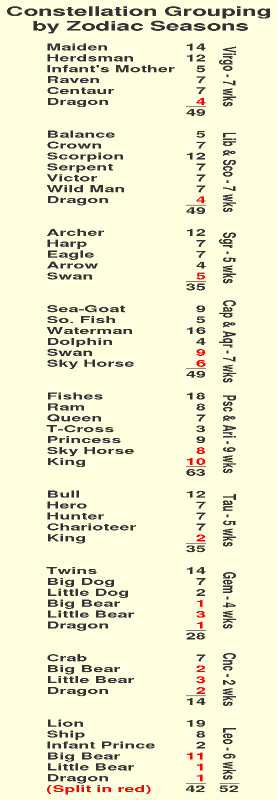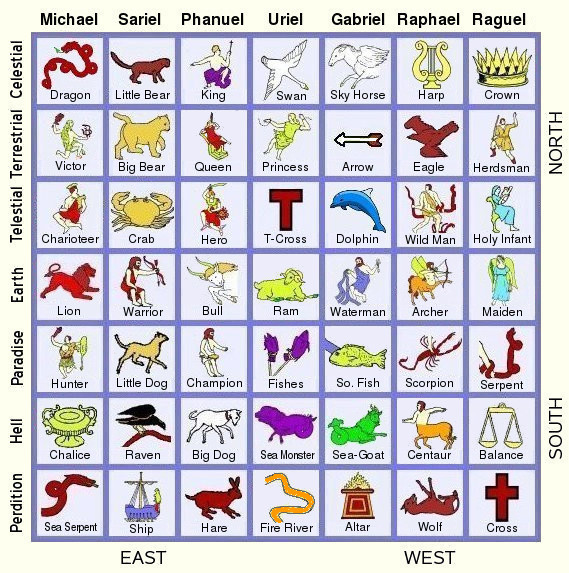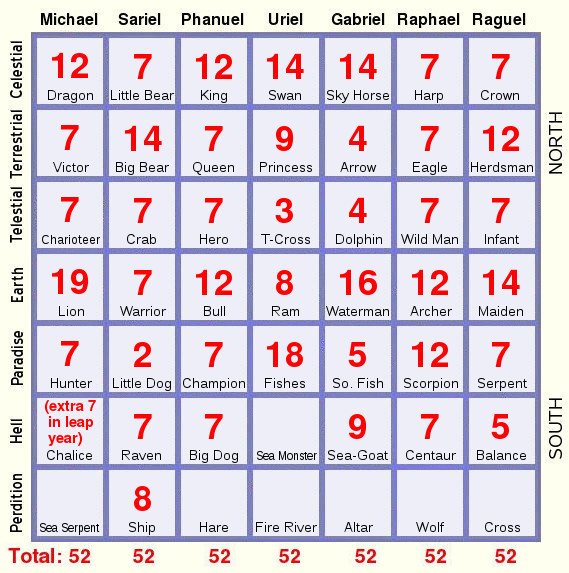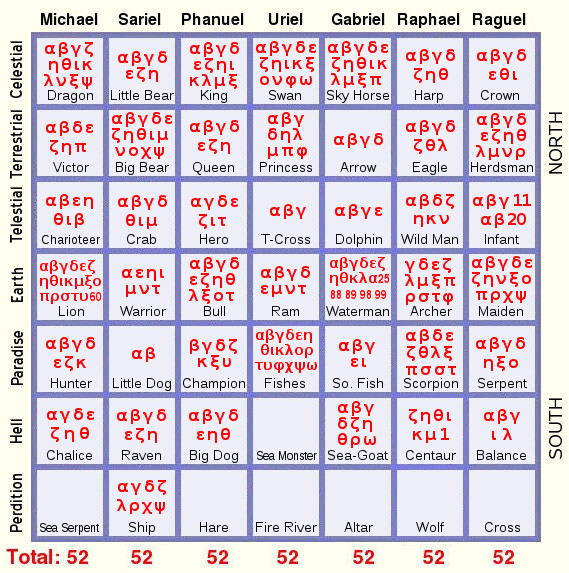
by John P. Pratt
5 Feb 2020, 7 Temple (SR), Dolphin (S)
©2019 by John P. Pratt. All rights Reserved.
An updated table of which stars are in the Star Calendar is presented.
 |
Recently some new developments indicated that a few constellations in that 7x7 table were in the wrong columns. When those were corrected (see Figure 1), it changed a few stars which needed to be included in the Star Calendar. These changes resulted in a much improved, more accurate version.
As an example, ten rules were given in earlier articles about how to know which stars are in the Star Calendar and how to order them.[2] One rule was that a constellation should entirely fit into its "zodiac season", that is, into the number weeks allotted to each zodiac constellation. For example, the star days for the Hero (Perseus), the Hunter (Orion), and the Charioteer (Auriga) should all fit into the days assigned to the Bull (Taurus). There are two exceptions to this rule: (1) the constellations that are so far north that their stars necessarily must extend into more than one zodiac month, and (2) the zodiac seasons which overlap each other. Those six far north constellations are the Dragon, the Big and Little Bears, King, Swan, Sky Horse. Before now, it was not possible to fulfill the rule for all other constellations, so in my work it was treated as only a guideline, not as a requirement. With the slight adjustments to the columns, that rule is now fulfilled, as shown in the table of Constellation Groupings. That table is of the new update to show how the rule is fulfilled; there was no such table before because many of the constellations fell into two zodiac seasons. That is compelling that the Star Calendar is now much closer to being entirely correct.
 |
 |
It should be emphasized that the ten rules impose very strict requirements on exactly which stars may be included in the Star Calendar and even on what order they appear. For example, Figure 2 shows the number of stars in each constellation, and the total stars in each column should be one seventh of the total of 364 stars, or 52 stars per column. Note that the number 52 is not divisible by 7, even though most of constellations contain 7 stars. On the other hand, the table of Constellation Groupings above indicates that the number of stars in each individual or pair of overlapping constellations must be divisible by seven! That is, each must equal an exact number of weeks so that each zodiac constellation can commence on a Saturday at noon. It was difficult to find even one solution to meet all of the criteria.
 |
Figure 3 shows my best proposal to meet all of the criteria required. Each Greek letter (or in some cases a number) is the official astronomical designation of an included star in that constellation. Thus, it appears that the Star Calendar was provided in the form of puzzle for us to solve, given to us by the Creator!